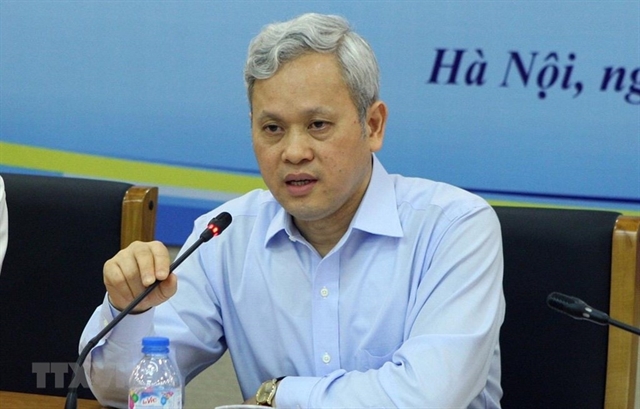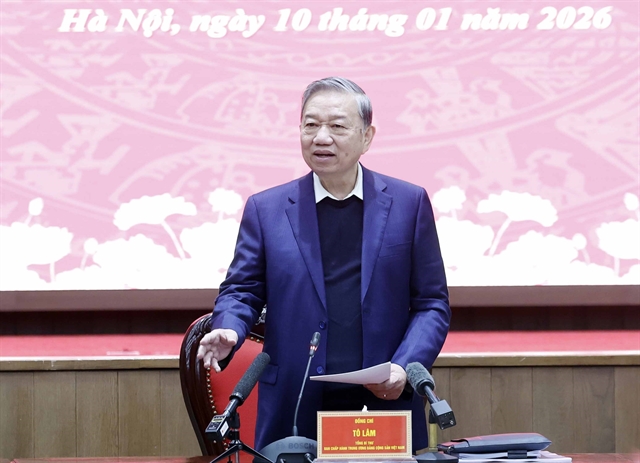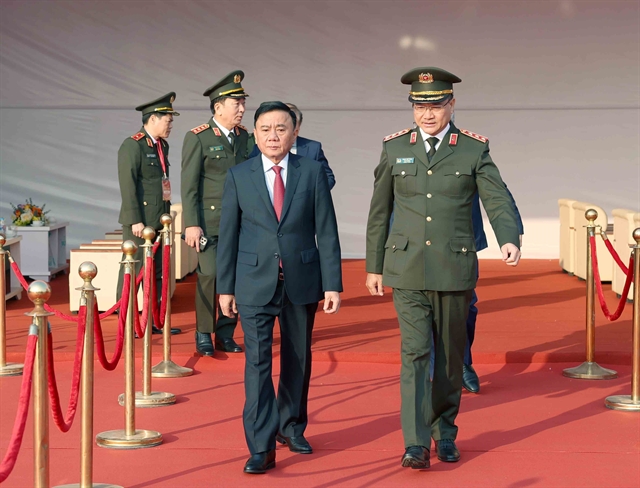 Economy
Economy


|
| Economist Nguyễn Bích Lâm, former head of the General Statistics Office of Vietnam (GSO). VNA/VNS Photo |
Recent adjustments made to Việt Nam's electricity retail prices were part of an effort to fuel the next economic development phase, said the former head of the General Statistics Office of Vietnam (GSO) Nguyễn Bích Lâm in an interview with the Vietnam News Agency.
In the third quarter of 2023, the Ministry of Industry and Trade (MoIT) will submit to the central Government a mechanism for adjusting the average retail prices, which could be adjusted every three months, instead of every six months. What is your opinion on this?
In the context of constantly fluctuating and unpredictable global fuel prices, which play a large part in Việt Nam's thermal power production, the domestic electricity production costs are expected to remain unstable. For example, in 2022, the price of coal increased by 264 per cent and the price of oil and gasoline increased by 143 per cent compared to the previous year.
In the first six months of 2023, however, the price of coal decreased by 19.79 per cent, oil and gasoline decreased by 12.05 per cent, and liquefied petroleum gas decreased by 17.31 per cent compared to the same period last year.
Currently, power output from coal, gas, and oil accounts for 43.5 per cent of the country's total electricity output. Therefore, fluctuations in the prices of these inputs directly impact retail electricity prices for both production and consumption.
By the end of March, MoIT announced the production and management costs of electricity for 2022 by Vietnam Electricity (EVN) increased by 9.27 per cent compared to 2021. Unable to adjust prices accordingly, EVN incurred losses of over VNĐ26.4 trillion (over US$1.1 billion) in 2022. Should prices continue to fail to match input costs, the electricity sector will face significant losses, affecting the preservation of the State's capital in EVN and the ability to supply sufficient electricity to the economy. This situation may also negatively impact national energy security in the context of climate change leading to phenomena such as El Nino and the increasing electricity demand.
MoIT's proposal to adjust retail electricity prices every three months instead of every six months is, therefore, a necessary and suitable move to deal with continuous fluctuations in input prices.
In my opinion, a flexible price adjustment mechanism eliminates the problem of production costs being higher than the selling prices and enables businesses and households to adjust and plan their electricity consumption. Additionally, shortening the adjustment periods sends signals to the market, allowing businesses and consumers to avoid uncertainties and minimise inflation caused by fluctuating electricity prices.
Is cutting down the adjustment periods from six to three months a suitable economic solution for the development of the economy?
In a draft decree proposed by the Prime Minister's Office recently, EVN is to be allowed to adjust prices within a range of decrease from 1 per cent and increase from 3 per cent to below 5 per cent during a period of three months.
The Prime Minister will grant MoIT the authority to decide on adjusting the retail electricity price with an increase of 5 per cent to below 10 per cent. In both cases, after the implementation of the adjustment, EVN is required to report to MoIT, the Ministry of Finance (MoF), and the State Capital Management Committee at the enterprise level.
In case prices need to be adjusted by an increase of 10 per cent or greater, adjusted beyond the regulated price ranges, or affecting the macroeconomic situation, the decision will be made by the Prime Minister.
The delegation and empowerment given to EVN, MoIT, and the Prime Minister, as well as the responsibilities of MoF and the State Capital Management Committee at the enterprise level, are fully compliant with the provisions of the country's Law on Prices.
In addition, it must be taken into account the impact of electricity prices on macroeconomic stability, inflation control, and economic growth. Such autonomy is designed to grant the electricity sector greater capacity to plan and execute business and investment activities.
What changes will such a policy produce in the sector in the future?
As the policy allows both price increases and decreases, it aims at gradually eliminating situations in which price is lower than the production cost, ensuring profitability in the electricity production and business activities.
Additionally, it aims to generate financial resources for the electricity sector to expand and enhance its capacity to supply electricity to the economy, moving towards a market-based electricity pricing model, and reflecting the true law of supply and demand. This will serve as a motivation for EVN, non-state players, and foreign direct investment (FDI) to invest in electricity production and business. This is a significant and necessary move in the country's transitioning process to renewable energy.
Retail electricity prices being adjusted in a faster and more flexible manner is a preliminary step in implementing Resolution No 55-NQ/TW dated February 11, 2020, issued by the Politburo on the strategic direction for the development of Việt Nam's energy sector until 2030, with a vision to 2045. This resolution advocates applying market prices to all energy types, encouraging and creating favourable conditions for all economic stakeholders, especially the private sector, to participate in energy development, and eliminating all forms of subsidies, monopolies, unfair competition practices, and lack of transparency in the sector.
Under a competitive electricity market model, the sector will be able to meet the increasing demand for electricity in the future and better ensure national energy security. At the same time, this will create a strong foundation for sustainable socio-economic development.
How will the new policy contribute to the country's future economic development phase?
Electricity is strategically an important commodity. When the supply is insufficient and electricity prices are not reasonable, it has a significantly negative impact on macroeconomic stability, which in turn hinders the country's development process.
In recent years, economic restructuring has been happening rapidly. However, electricity pricing policies have been said to be slow to adapt and have not encouraged businesses to adopt cost-saving technologies or energy conservation. In addition, the pricing policy has not been aligned with the goal of economic restructuring, leading to certain industries, including some of the country's economic spearheads, having to bear high electricity prices to compensate for other sectors. Therefore, there is a need to review the current pricing policy for various economic sectors and consumers.
As electricity production and market activities move towards a more transparent and competitive model, barriers will be removed to ensure that prices are to be determined by the market. Electricity enterprises must ensure full cost recovery, profitability, and financial autonomy while attracting investment for the sector's development. This approach shows the government's high priority for the development of sustainable energy, as well as environmental protection.
As shown in previous months, power shortages caused by heatwaves and the electricity sector's lack of preparation to ensure sufficient supply have further added difficulties for businesses and restrained growth. The limited investment in the electricity infrastructure in recent times is evidence of how we are wasting the growth potential of the economy.
A more transparent and competitive market will serve as a driving force to attract foreign direct investment and investment from all economic sectors for electricity production, ensuring sufficient supply to meet the demands in the future. VNS




